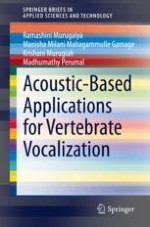Acoustic-Based Applications for Vertebrate Vocalization is designed to help researchers improve their findings and knowledge of vertebrate vocalization by focusing on the integration of acoustic features with new technologies, such as the Internet of Things (IoT), cloud computing, and virtual and cognitive reality. The book addresses the most common challenges in vertebrate vocalization-based research via suitable audio signal processing techniques, data collection, data pre-processing, acoustic feature engineering, extraction, and selection for multidisciplinary applications, i.e. feature classification, vertebrate communication, behavioral analysis, and signal pattern analysis. The book is an important reference for scholars, researchers, industry practitioners, teachers, and students across a number of disciplines, including bioengineering, audio engineering, systems engineering, biotechnology, signal processing, biology, zoology, and animal sciences.
